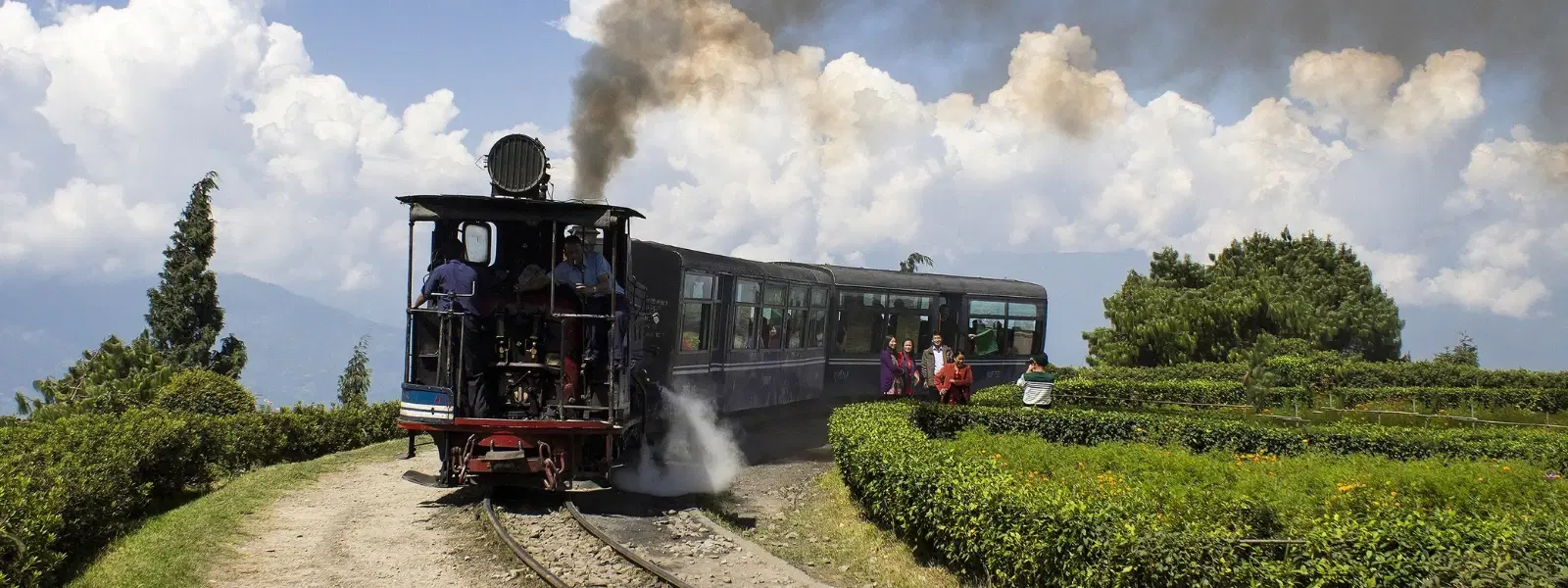
Flights
•04 min read

Imagine chugging along a winding track, the rhythmic chime and billowing steam of the Darjeeling Himalayan Railway toy train taking you through lush tea gardens and misty Himalayan hills. In this guide, we unveil everything you need to know to plan a memorable ride on one of India's most iconic narrow gauge trains. You will discover tips on ticket booking, route options, seasonal advice, and insider tricks to fully savor your journey on this UNESCO heritage railway.
Established in 1881, the Darjeeling Himalayan Railway is a marvel of engineering and a true cultural icon in India. Its heritage and the timeless charm of its steam locomotives have earned it a coveted UNESCO World Heritage Site status. This historical gem continues to attract travelers with its unique blend of nostalgia and engineering brilliance, making it an essential stop on any Himalayan railway journey.
The Darjeeling toy train offers two primary routes that perfectly suit different travel styles. The popular Joy Ride running from Darjeeling to Ghum and back highlights the extraordinary Batasia Loop and features the captivating Ghum Museum. For those seeking a longer adventure, the Long-Haul Route from New Jalpaiguri to Darjeeling is an excellent choice. The train operates both steam and diesel locomotives, each providing a different flavor of the overall experience.
Booking tickets for the Darjeeling Himalayan Railway toy train is straightforward. You can start by accessing the Indian Railways website or using popular apps for online booking. Simply select your journey options, choose your class, and pick your seat. Alternatively, tickets are available at the Darjeeling station kiosks where friendly counters assist with offline booking. Some travelers also opt for travel agents who provide a more personalized booking experience, albeit sometimes at a higher cost.
The ticket prices vary depending on the route and class of service. For joy rides, expect prices ranging from ₹1,000 to ₹1,500 per person. Premium classes, like First Class or Vista Dome Coaches, offer elegant seating and panoramic views that justify their cost. While the ride might seem expensive, the unique experience and the historical significance of the train ride make it worthwhile.
Train timings differ based on the route and season. Joy rides typically operate in the morning and afternoon and allow ample time to absorb the scenic surroundings. For longer journeys, early morning departures ensure you catch the breathtaking views all day long. Checking the Indian Railways website for seasonal schedules is always a good idea to plan your trip perfectly.

The journey is filled with remarkable sights that highlight the region’s natural beauty and rich history. One of the most spectacular sights is the Batasia Loop, where the train gracefully circles to conquer the steep gradients. The Ghum Museum provides fascinating insights into the railway’s storied past. Alongside these, vast tea gardens and charming hill station landscapes pass by, making every moment visually compelling.
Inside the train, you can expect cozy seating arrangements and a warm, inviting ambiance. The offerings differ between steam and diesel locomotives; traveling by steam provides a touch of vintage charm that enhances the overall experience, while diesel options may provide a slightly more modern convenience. Either way, the onboard facilities are designed to ensure comfort throughout this memorable Himalayan railway journey.
For the best photographic shots, consider being on the left side of the train when it ascends from New Jalpaiguri to Darjeeling. This side tends to offer uninterrupted views of the striking Himalayan mountains and vibrant tea gardens. Packing light snacks, a water bottle, and a camera with extra batteries can help capture the romance of the journey.
For the best views, book a seat on the left side of the train when traveling uphill from New Jalpaiguri to Darjeeling. The left side offers uninterrupted vistas of the Himalayan mountains and lush tea gardens.
The journey’s enchantment varies with the seasons. During spring and summer, the clear skies and vibrant landscapes create perfect conditions for sightseeing. The winter months transform the scene into a wonderland with snow-capped peaks and mysterious, misty mornings. Each season offers a unique perspective on this hill station railway, ensuring that there is always a good time to experience the Darjeeling toy train.
Occasionally, the Darjeeling Himalayan Railway offers chartered trains and special services during festival seasons or holidays. These exclusive rides provide a rare opportunity to experience the heritage train in a more private and intimate setting. For travelers seeking a unique twist to their journey, private coach bookings can offer an unbeatable, bespoke railway experience.
The ticket price varies depending on the route and class. For Joy Rides, prices typically range between ₹1,000–₹1,500 per person.
The cost reflects the unique experience of riding a UNESCO heritage railway, the operational expenses of maintaining steam locomotives, and the limited seating capacity.
Tickets can be booked through the Indian Railways website or apps like IRCTC. Select "Darjeeling Himalayan Railway" under the train options.
Joy Rides typically operate in the morning and afternoon, while long-haul routes start early in the day. Check the Indian Railways website for updated schedules.
Yes, the ride is family-friendly and offers an enjoyable experience for children, especially with its scenic routes and historical charm.
The Darjeeling Himalayan Railway toy train is more than just a mode of transportation—it is a journey through history, culture, and breathtaking landscapes. This guide has covered everything from booking tickets and understanding route options to understanding the best times to ride and what to expect on board. Whether you choose a quick joy ride or a long-haul adventure, each journey promises a magical experience that captures the very spirit of the Himalayas.